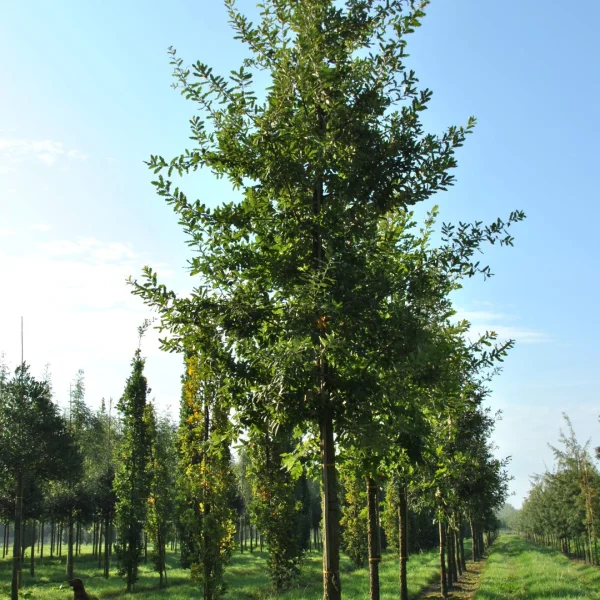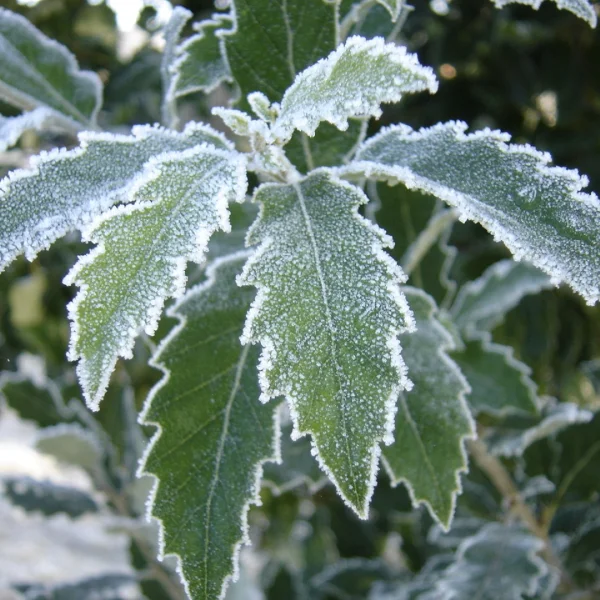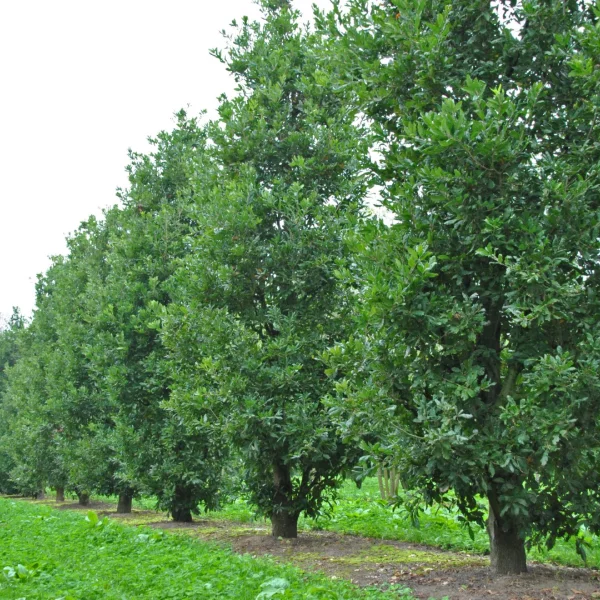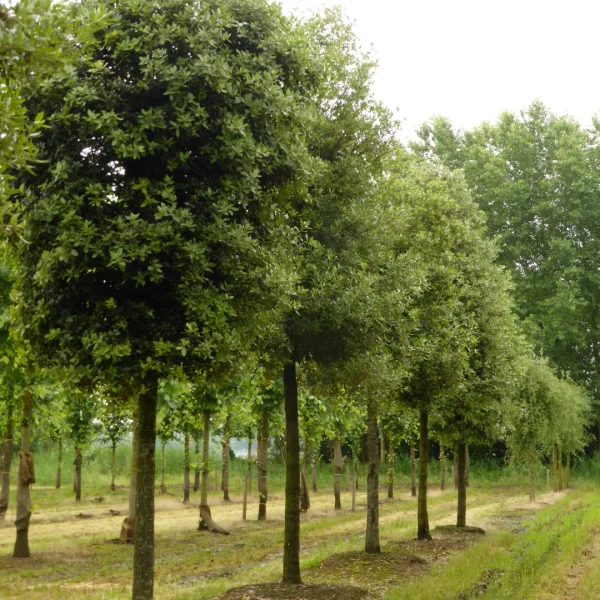Quercus rhysophylla 'Maya' – Quercus rhysophylla 'Maya'
Fagaceae
Quercus rhysophylla 'Maya' – Quercus rhysophylla 'Maya'
Specia Q. rysophylla este un arbore adus în cultură din Mexic în jurul anului 1978, care nu este rezistent în nord-vestul Europei. Soiul "Maya" a apărut din răsaduri și se dovedește mult mai rezistent decât specia. Formează un arbore de mărime medie, cu o coroană densă și rotundă. Scoarța de culoare gri închis este inițial netedă, dar ulterior se va desprinde cu plăci pătrate care dezvăluie suprafața mai deschisă. Lăstarii tineri sunt de culoare maro-portocaliu închis până la maro-roșu închis. Frunzele mari, eliptice, sunt aspre, cu margini dințate. Acestea au o lungime de până la 25 cm. Frunzele de vară sunt de un verde închis lucios. Ghindele rotunde sunt ascuțite și sunt cuprinse între două treimi și jumătate de cupă. Au pedunculul foarte scurt și par să se așeze aproape direct pe creangă. Un arbore de parc surprinzător pentru orice sol, dacă este suficient de umed.
Availability
Specifications
Download PDF
Height
5 - 6 m
Width
5-8m
Crown
round, semi-open crown
Bark and branches
twigs dark olive green, bark dark grey, smooth, later with square plates peeling off
Leaf
elliptical, edge serrated, rough, glossy dark green, 15 - 25 cm, evergreen
Flowers
oval, pointed, 1 - 2 cm, cupule with attached scales, light brown
Fruits
David Bömer, Boomkwekerij Bömer, Zundert, The Netherlands, 2006
Spines/thorns
None
Toxicity
usually not toxic to people, (large) pets and livestock
Soil type
all, if sufficiently moisturised
Soil moisture
suitable for wet soil
Paving
tolerates no paving
Winter hardiness zone
6 (-23,3 to -17,8 °C)
Wind resistance
fair to good
Other resistances
resistant to frost (WH 1 - 6), can withstand wind, resistant to de-icing salt
Application
tree containers, roof gardens, industrial areas
Shape
clearstem tree, multi-stem treem
Origin
De soort Q. rysophylla is een, omstreeks 1978 vanuit Mexico in cultuur gebrachte boom, die in Noordwest-Europa niet winterhard is. De cultivar 'Maya' ontstond uit zaailingen en blijkt beduidend beter winterhard dan de soort. Vormt een middelgrote boom met een dichte ronde kroon. De donkergrijze bast is aanvankelijk glad maar zal later met vierkante platen loslaten waardoor de lichtere ondergrond zichtbaar wordt. De jonge scheuten zijn diep bruinoranje tot diep bruinrood. De grote elliptische bladeren zijn ruw en hebben een getande rand. Ze zijn tot 25 cm lang. Het zomerblad is glanzend donkergroen. De ronde eikels zijn gepunt en worden voor tweederde tot de helft door het napje omsloten. Ze zijn zeer kort gesteeld en lijken vrijwel direct op de twijg te zitten. Een verrassende parkboom voor iedere grond, mits voldoende vochthoudend.
Possibly of interest
Frequently asked questions
Quercus rhysophylla 'Maya'
Quercus rhysophylla 'Maya' can eventually reach a height of 5 - 6 m, depending on the site and climate conditions.
Quercus rhysophylla 'Maya' has a average growing and can eventually reach a height of 5 - 6 m, depending on the site and climate conditions.
The right time to plant Quercus rhysophylla 'Maya' is during the dormancy period. In Western Europe, Quercus rhysophylla 'Maya' with root balls can generally be planted from mid-November to late April, although this depends strongly on the climatic conditions and the species of tree.
may.
General
 English
English
 English (United Kingdom)
English (United Kingdom)
 Nederlands
Nederlands
 Nederlands (België)
Nederlands (België)
 Deutsch
Deutsch
 français
français
 čeština
čeština
 polski
polski
 español
español
 română
română
 dansk
dansk
 svenska
svenska
 magyar
magyar
 Türkçe
Türkçe
 slovenčina
slovenčina
 русский
русский
 norsk
norsk






